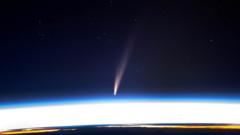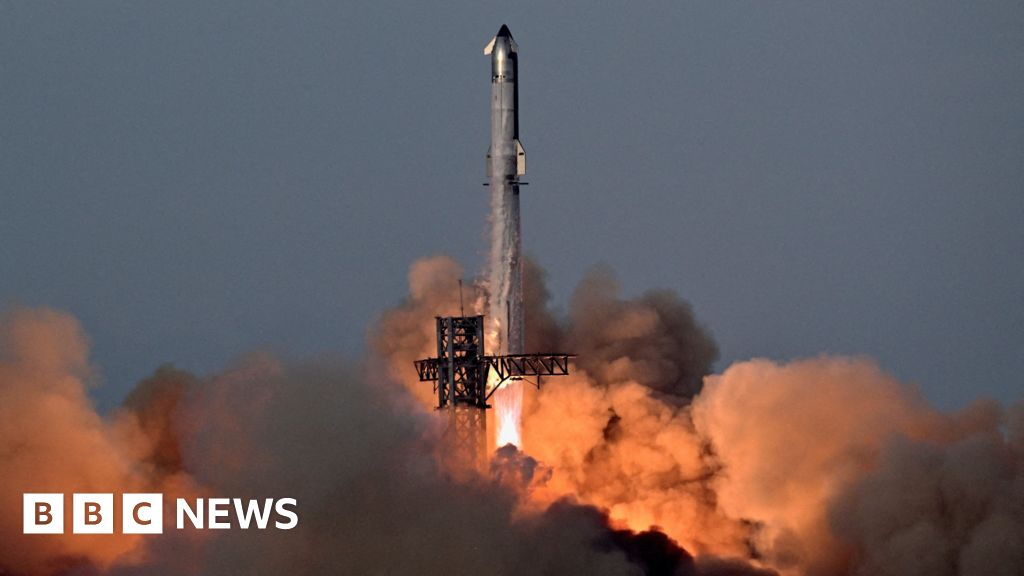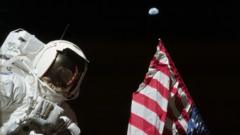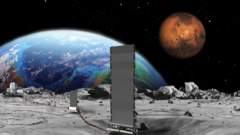With the potential to outshine Venus, this remarkable cosmic event invites observers, particularly in the southern hemisphere, to look towards the skies, as beautiful sightings are anticipated, although the comet's brightness remains an uncertain factor.
As the world turns its gaze skyward, astronomers share their observations of Comet C/2024 G3 (Atlas), which may only be visible to human eyes once in 160,000 years. According to NASA, this rare spectacle has drawn attention due to its recently observed brightness, prompting hopes for stargazers around the globe.
The comet reached perihelion on Monday, signifying its closest approach to the Sun and its potential for increased illumination. Experts suggest that Comet Atlas could shine with the brilliance of Venus, making it a remarkable sight to behold.
Dr. Shyam Balaji, an astroparticle physics researcher at King's College London, explains that the comet's trajectory positions it about 8.3 million miles from the Sun, classifying it as a "sun-skirting" comet. "Visibility may vary based on local weather conditions, but the best viewing could be in the southern hemisphere," he noted.
Observers in this region should gaze towards the eastern horizon before dawn and the western horizon post-sunset for the best chance to spot this elusive cosmic traveler. "Brightness predictions can be tricky," cautioned Dr. Balaji, underscoring the unpredictable nature of comets.
In contrast, those in the northern hemisphere, including the UK, may find sightings more challenging due to the comet's relative positioning with the Sun. Stargazers are urged to check local weather forecasts to optimize their chances of observing the comet.
To enhance viewing experiences, Dr. Balaji recommends seeking locations far from light pollution and utilizing binoculars or a small telescope for a clearer view. As he vividly described, the excitement of witnessing such a celestial event is akin to marveling at a spectacular painting that may soon fade.
Recently, NASA astronaut Don Pettit shared a stunning photograph of the comet from the International Space Station, capturing the awe of observing a comet from orbit. "It is totally amazing to see a comet from orbit. Atlas C2024-G3 is paying us a visit," Pettit expressed on social media, emphasizing the new dimension that such cosmic occurrences bring to scientific exploration and public wonder.
As anticipation builds for the comet's appearance, the world awaits a breathtaking reminder of the mysteries beyond our planet—a moment where science, beauty, and human curiosity converge in the vastness of the universe.
As the world turns its gaze skyward, astronomers share their observations of Comet C/2024 G3 (Atlas), which may only be visible to human eyes once in 160,000 years. According to NASA, this rare spectacle has drawn attention due to its recently observed brightness, prompting hopes for stargazers around the globe.
The comet reached perihelion on Monday, signifying its closest approach to the Sun and its potential for increased illumination. Experts suggest that Comet Atlas could shine with the brilliance of Venus, making it a remarkable sight to behold.
Dr. Shyam Balaji, an astroparticle physics researcher at King's College London, explains that the comet's trajectory positions it about 8.3 million miles from the Sun, classifying it as a "sun-skirting" comet. "Visibility may vary based on local weather conditions, but the best viewing could be in the southern hemisphere," he noted.
Observers in this region should gaze towards the eastern horizon before dawn and the western horizon post-sunset for the best chance to spot this elusive cosmic traveler. "Brightness predictions can be tricky," cautioned Dr. Balaji, underscoring the unpredictable nature of comets.
In contrast, those in the northern hemisphere, including the UK, may find sightings more challenging due to the comet's relative positioning with the Sun. Stargazers are urged to check local weather forecasts to optimize their chances of observing the comet.
To enhance viewing experiences, Dr. Balaji recommends seeking locations far from light pollution and utilizing binoculars or a small telescope for a clearer view. As he vividly described, the excitement of witnessing such a celestial event is akin to marveling at a spectacular painting that may soon fade.
Recently, NASA astronaut Don Pettit shared a stunning photograph of the comet from the International Space Station, capturing the awe of observing a comet from orbit. "It is totally amazing to see a comet from orbit. Atlas C2024-G3 is paying us a visit," Pettit expressed on social media, emphasizing the new dimension that such cosmic occurrences bring to scientific exploration and public wonder.
As anticipation builds for the comet's appearance, the world awaits a breathtaking reminder of the mysteries beyond our planet—a moment where science, beauty, and human curiosity converge in the vastness of the universe.




















